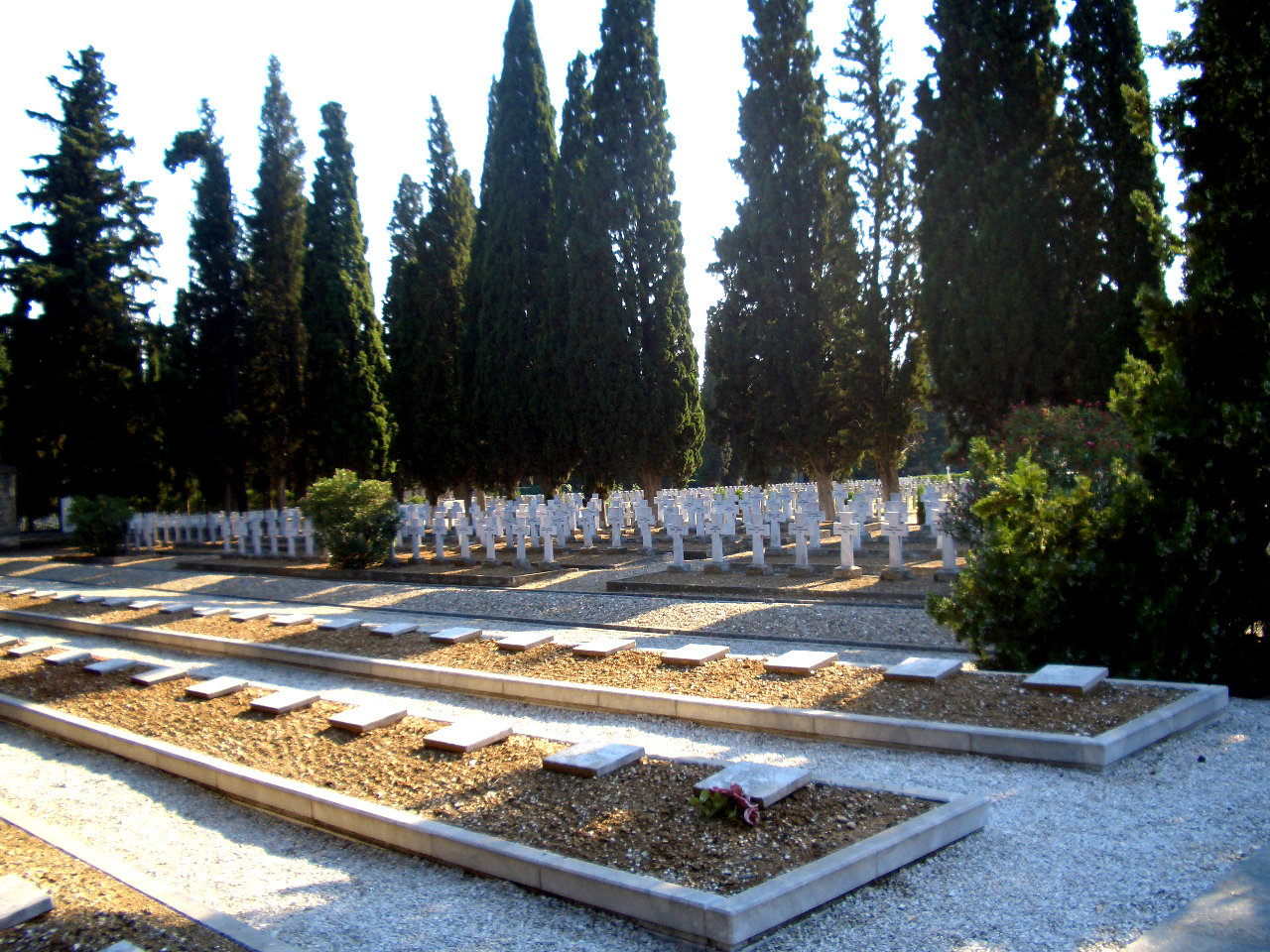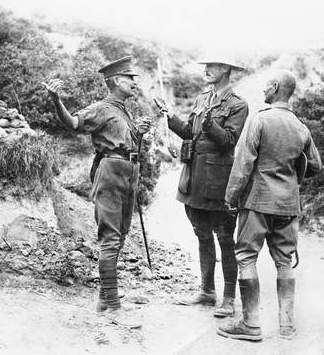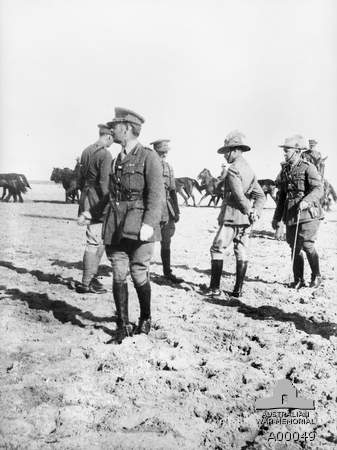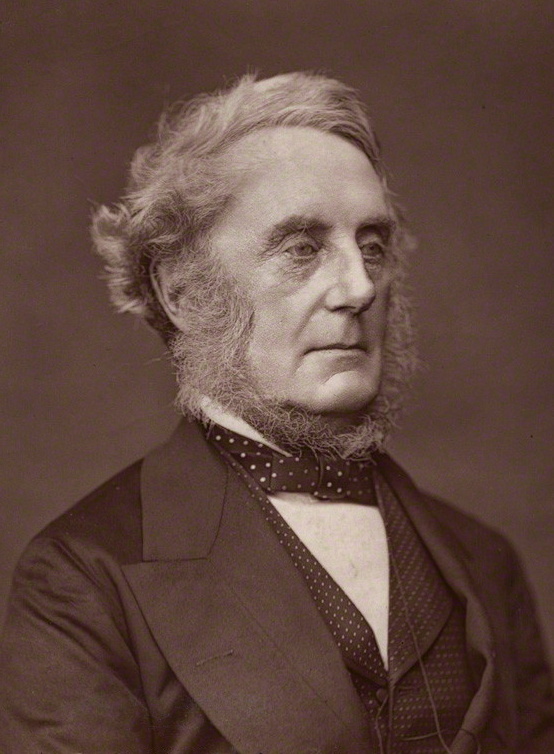|
Experimental Mechanized Force
The Experimental Mechanized Force (EMF) was a brigade-sized formation of the British Army. It was officially formed on 1 May 1927 to investigate and develop the techniques and equipment required for armoured warfare and was the first armoured formation of its kind in the world. It was renamed the Armoured Force the following year. The Royal Air Force (RAF) took part in the exercises and demonstrated the value of ground–air co-operation. For two years the EMF participated in exercises which demonstrated the capabilities of mechanised forces against traditionally organised and trained infantry and cavalry. The force was controversial in the army and was disbanded in February 1929. The EMF and AF were followed by experiments with a Tank Brigade in 1931, which had three mixed battalions of medium and light tanks and a battalion of Carden Loyd machine-gun carriers for reconnaissance. Armoured warfare theory In the aftermath of the First World War, several theorists sought ways to a ... [...More Info...] [...Related Items...] OR: [Wikipedia] [Google] [Baidu] |
Robert Collins (British Army Officer)
Major-General Robert John Collins CMG DSO (22 August 1880 – 6 March 1950) was a British Army officer who became Commandant of the Staff College, Camberley. Military career Educated at Marlborough College, Collins, after service with the 6th Warwick Militia during the Second Boer War, was commissioned into the Royal Berkshire Regiment in 1899. He fought in the Second Boer War and then served with the Egyptian Army until 1911 and attended the Staff College, Camberley from 1913 to 1914, where J. F. C. Fuller was one of his fellow students. He took part in the First World War, becoming Chief Instructor at the Staff School in Cambridge during the last year of the war. He was appointed Commander of 73rd Brigade later in 1918 and became an instructor at the Staff College, Camberley in 1919 before taking up a post as Director of Military Training in India in 1924. He went on to be Commandant of the Small Arms School in 1929 and General Officer Commanding (GOC) of the 3rd (Meerut) ... [...More Info...] [...Related Items...] OR: [Wikipedia] [Google] [Baidu] |
Military Engineering Experimental Establishment
The Military Engineering Experimental Establishment (MEXE) was a British defence research unit. It was formed from the Experimental Bridging Establishment in 1946 and was amalgamated with the Fighting Vehicles Research and Development Establishment to form the Military Vehicles and Engineering Establishment in 1970. MEXE developed the MEXE method (a means of assessing the carrying capacity of arch bridges), the MEXE probe (a field tool to estimate the California bearing ratio of a soil) and the MEXE system (a means of estimating properties of a piece of unknown land by comparing it with known similar terrain). History and organisation The Military Engineering Experimental Establishment had its roots in the Experimental Bridging Company of the Royal Engineers (RE), formed from the last un-disbanded battalion of First World War assault engineers, and under the command of a British Army major. This unit developed into the Experimental Bridging Establishment of 1925 under a ... [...More Info...] [...Related Items...] OR: [Wikipedia] [Google] [Baidu] |
Tidworth Camp
Tidworth Camp is a military installation at Tidworth in Wiltshire, England. It forms part of the Tidworth, Netheravon and Bulford (TidNBul) Garrison. History The Camp was established when the War Office acquired a 19th-century mansion – Tedworth House – and large tracts of land to its north in 1897. Headquarters Southern Command was established at Tidworth Camp in 1905. Lucknow Barracks and Mooltan Barracks were completed in 1905, Tidworth Military Hospital was finished in 1907. Aliwal Barracks, Assaye Barracks, Bhurtpore Barracks, Candahar Barracks, Delhi Barracks and Jellalabad Barracks were added later, and a Royal Ordnance depot was established during the First World War. The barracks are named for battles in India and Afghanistan: Aliwal, Assaye, Bhurtpore, Candahar, Delhi, Jellalabad, Lucknow and Mooltan. (Jellalabad Barracks should not be confused with the former barracks of the same name in Taunton, Somerset). There was also an army hospital during the First ... [...More Info...] [...Related Items...] OR: [Wikipedia] [Google] [Baidu] |
7th Infantry Brigade And Headquarters East
The 7th Light Mechanised Brigade Combat Team is a formation in the British Army with a direct lineage to 7th Armoured Brigade and a history that stretches back to the Napoleonic Wars. It saw active service in the Crimean War, the Second Boer War and both the First and the Second World Wars. In 2014, the 7th Armoured Brigade was re-designated as 7th Infantry Brigade, thereby ensuring that the famed "Desert Rats" continue in the British Army's Order of battle. History Waterloo Campaign When Wellington organized his troops into numbered divisions for the Peninsular War, the component brigades were named for the commanding officer. For the Hundred Days Campaign, he numbered his British infantry brigades in a single sequence, 1st to 10th. The 7th Brigade formed part of the 7th Division under the command of Major-general Kenneth MacKenzie. It consisted of: * 2nd Battalion, 25th (the King's Own Borderers) Regiment of Foot * 2nd Battalion, 37th (the North Hampshire) Regiment of Foot ... [...More Info...] [...Related Items...] OR: [Wikipedia] [Google] [Baidu] |
Royal Tank Corps
The Royal Tank Regiment (RTR) is the oldest tank unit in the world, being formed by the British Army in 1916 during the First World War. Today, it is the armoured regiment of the British Army's 12th Armoured Infantry Brigade. Formerly known as the Tank Corps and the Royal Tank Corps, it is part of the Royal Armoured Corps. History First World War The formation of the Royal Tank Regiment followed the invention of the tank. Tanks were first used at the Battle of Flers–Courcelette in September 1916 during the Battle of the Somme in the First World War. They were at first considered artillery, and crews received artillery pay. At that time the six tank companies were grouped as the Heavy Section of the Machine Gun Corps (MGC). In November 1916 the eight companies then in existence were each expanded to form battalions (still identified by the letters A to H) and designated the Heavy Branch MGC; another seven battalions, I to O, were formed by January 1918, when all the battalions ... [...More Info...] [...Related Items...] OR: [Wikipedia] [Google] [Baidu] |
Chief Of The General Staff (United Kingdom)
The Chief of the General Staff (CGS) has been the title of the professional head of the British Army since 1964. The CGS is a member of both the Chiefs of Staff Committee and the Army Board. Prior to 1964, the title was Chief of the Imperial General Staff (CIGS). Since 1959, the post has been immediately subordinate to the Chief of the Defence Staff, the post held by the professional head of the British Armed Forces. The current Chief of the General Staff is General Sir Patrick Sanders, who succeeded his predecessor, General Sir Mark Carleton-Smith, in June 2022. Background The title was also used for five years between the demise of the Commander-in-Chief of the Forces in 1904 and the introduction of Chief of the Imperial General Staff in 1909. The post was then held by General Sir Neville Lyttelton and, briefly, by Field Marshal Sir William Nicholson. Throughout the existence of the post the Chief of the General Staff has been the First Military Member of the Army B ... [...More Info...] [...Related Items...] OR: [Wikipedia] [Google] [Baidu] |
Eastern Command (United Kingdom)
Eastern Command was a Command of the British Army. Nineteenth century Great Britain was divided into military districts on the outbreak of war with France in 1793. In the first half of the 19th century the command included the counties of Essex, Suffolk, Norfolk, Cambridgeshire, Huntingdonshire and Hertfordshire. It was based in Colchester. Disbanded after the Napoleonic Wars, the Eastern District Command was re-created in 1866 and was based at Flagstaff House in Colchester. In January 1876 a ‘Mobilization Scheme for the forces in Great Britain and Ireland’ was published, with the ‘Active Army’ divided into eight army corps based on the District Commands. 1st Corps was to be formed within Eastern Command, based in Colchester. This scheme disappeared in 1881, when the districts were retitled ‘District Commands’. Twentieth century The 1901 Army Estimates introduced by St John Brodrick allowed for six army corps based on six regional commands. As outlined in a paper ... [...More Info...] [...Related Items...] OR: [Wikipedia] [Google] [Baidu] |
George Milne, 1st Baron Milne
Field Marshal George Francis Milne, 1st Baron Milne, (5 November 1866 – 23 March 1948) was a senior British Army officer who served as Chief of the Imperial General Staff (CIGS) from 1926 to 1933. He served in the Second Boer War and during the First World War he served briefly on the Western Front but spent most of the war commanding the British forces on the Macedonian front. As CIGS he generally promoted the mechanization of British land forces although limited practical progress was made during his term in office. Army career Born the son of George Milne and Williamina Milne (née Panton) and educated at MacMillan's School in Aberdeen and the Royal Military Academy, Woolwich, Milne was commissioned into the Royal Artillery on 16 September 1885. He was initially posted to a battery at Trimulgherry in India and then joined a battery at Aldershot in 1889 before being posted back to India to a battery at Meerut in 1891.Heathcote, Anthony pg 208 Promoted to captain on 4 July 18 ... [...More Info...] [...Related Items...] OR: [Wikipedia] [Google] [Baidu] |
Laming Worthington-Evans
Sir Worthington Laming Worthington-Evans, 1st Baronet, (23 August 1868 – 14 February 1931) was a British Conservative politician. Background and education Born Laming Evans, he was the son of Worthington Evans and Susanah Laming. He assumed the prefix surname of Worthington by Royal Licence in 1916, although he had been calling himself Worthington Evans (without a hyphen) for many years. He trained as a solicitor. Military career Worthington-Evans was commissioned into the part-time 2nd Middlesex Artillery Volunteers in 1891 and was promoted Lieutenant in 1893 and Captain in 1897. He served as temporary Major in the First World War. Political career Worthington-Evans unsuccessfully contested the Colchester constituency in 1906. He won the seat in January 1910. Worthington-Evans was made a Baronet, of Colchester in the County of Essex, in 1916. He served in David Lloyd George's coalition government as Parliamentary Secretary to the Ministry of Munitions from 1916 to 1918 ... [...More Info...] [...Related Items...] OR: [Wikipedia] [Google] [Baidu] |
Alexander Godley
General Sir Alexander John Godley, (4 February 1867 – 6 March 1957) was a senior British Army officer. He is best known for his role as commander of the New Zealand Expeditionary Force and II Anzac Corps during the First World War. Born in Gillingham, Kent, in England, Godley joined the British Army in 1886. He fought in the Boer War and afterwards served in a number of staff positions in England. In 1910 he went to New Zealand as Commandant of the New Zealand Military Forces. Promoted to temporary major general, he reorganised the country's military establishment. Following the outbreak of the First World War, the New Zealand government appointed him as commander of the New Zealand Expeditionary Force, which he led for the duration of the war. During the Gallipoli campaign, Godley commanded the composite New Zealand and Australian Division, before taking over command of the Australian and New Zealand Army Corps for the final stages of the campaign. Promoted to lieutenant g ... [...More Info...] [...Related Items...] OR: [Wikipedia] [Google] [Baidu] |
Philip Chetwode, 1st Baron Chetwode
Field Marshal Philip Walhouse Chetwode, 1st Baron Chetwode, 7th Baronet of Oakley, (21 September 1869 – 6 July 1950), was a senior British Army officer. He saw action during the Second Boer War, during which he was present at the Siege of Ladysmith in December 1899. He saw action again during World War I on the Western Front, taking part in the First Battle of Ypres, and then in the Sinai and Palestine campaign during which he led his corps at the First Battle of Gaza in March 1917, at the Battle of Beersheba in October 1917 and the Battle of Jerusalem in November 1917. After the War he held a series of senior military appointments including Adjutant-General to the Forces and then Commander in Chief Aldershot Command. He went on to be Chief of the General Staff in India in 1928 and Commander in Chief in India in 1930 and was much concerned with the modernisation and "Indianisation" of the army in India. Early life and education Born the son of Sir George Chetwode, 6th Baro ... [...More Info...] [...Related Items...] OR: [Wikipedia] [Google] [Baidu] |
Cardwell Reforms
The Cardwell Reforms were a series of reforms of the British Army undertaken by Secretary of State for War Edward Cardwell between 1868 and 1874 with the support of Liberal prime minister William Ewart Gladstone. Gladstone paid little attention to military affairs but he was keen on efficiency. In 1870, he pushed through Parliament major changes in Army organisation. Germany's stunning triumph over France in the Franco-Prussian War proved that the Prussian system of professional soldiers with up-to-date weapons was far superior to the traditional system of gentlemen-soldiers that Britain used. The Reforms were not radical; they had been brewing for years and Gladstone seized the moment to enact them. The goal was to centralise the power of the War Office, abolish the purchase of officers' commissions, and create reserve forces stationed in Britain by establishing short terms of service for enlisted men. Ending the purchase system was controversial. The families of officers had ... [...More Info...] [...Related Items...] OR: [Wikipedia] [Google] [Baidu] |






